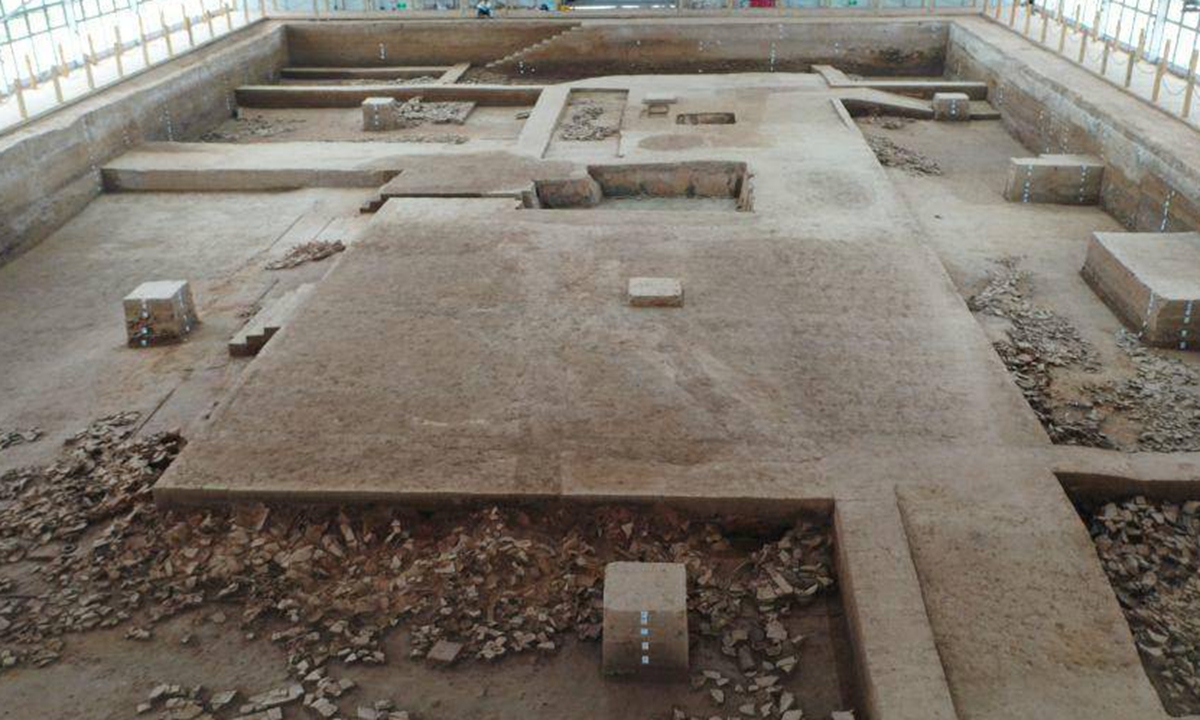ARTS / CULTURE & LEISURE
Resourceful Shaanxi Province reveals 2022’s top six archaeological discoveries

The No.3 Ancient Building at the Yueyang City Ruins in Northwest China's Shaanxi Province.Photo:Sina Weibo
The Top Six Archaeological Discoveries of 2022 in Northwest China's Shaanxi Province were revealed on Sunday by the Shaanxi Archaeological Society.Three archaeological sites on the list are based in the province's capital city Xi'an: the Ruins of Yueyang City, a Han Dynasty (206BC-AD220) bridge, and a Sui (581-618) and Tang (618-907) dynasties ruin known for its five bridges.
Zhang Xiaohui, a Tang Dynasty archaeologist, told the Global Times that the Ruins of Yueyang City were the "most notable" among the three sites with its ancient city axis and an over 2,000 year old "toilet" demonstrating ancient Chinese's "spirit of creation," Zhang noted.
Excavations at the site have revealed a north-south axis that runs through the site's No.3 building. This is the earliest city axis discovered in China so far.
Also in the No.3 building, a 2,400-year-old indoor toilet with a pipe system was discovered.
Archaeologist Xue Feng told the Global Times that this discovery not only reflects the lifestyle and "urban planning" of the Qin State, but also demonstrates Chinese people's "advanced wisdom in craftsmanship and design."
Another spot that has five bridges parallel to each other, called the Five Bridges of Zhuque Street, dates back to Chang'an (today's Xi'an) during the Sui and Tang dynasties.
They all have been built in a north-south direction.
Xue told the Global Times that the five bridges and the Han Dynasty bridge site that was also on the list are valuable examples for analyzing ancient Chinese bridge and canal engineering.
Over 350 relics, including notable Tang San Cai, literally tri-colored glazed pottery of the Tang Dynasty, have also been discovered at the Five Bridge Site.
Supported by a total of 874 piles, the Han Dynasty bridge is the first bridge from this dynasty ever discovered.
The Yeyuan Ruins provide insight into East-West cultural exchanges during the Paleolithic era.
Stone flakes unearthed at the site show that human activities started there million years ago.
In Xianyang city, the Xunyi Xitou Archaeological Site is a 2 million square meter Shang Dynasty (c.1600BC-1046BC) ruin that has shed light on the society of the time.
The Qingpingbao Ruins are a rare example of the original appearance of a Ming Dynasty camp fort along the Great Wall of China.
"Shaanxi is rich in archaeological resources. What we need to do next is carry out protection and research efforts and introduce them to the public," Xue told the Global Times.

